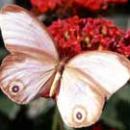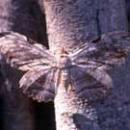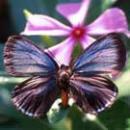BUTTERFLIES.Wing Fascination.
The planet's Great Spring gets spruced up every year with some 150,000 butterfly species. Their huge family (lepidoptrous) is one of the largest, second only to beetles in the realm of insects.
Another aspect linked to biological diversity that remains undefeated is the assortment of hues and designs of their wings, that coupled with their variety of shapes, multiple compositions, their different colors and shades, their pretentious or real mimetic functions and protective camouflage against predators, have filled page after page of both scientific and literary writings.
There's one kind of wingless butterfly called apterous. The rest of lepidopterons are invariably divided in four different species. Nervures and other outer features in the wings, as well as their genital attributes –especially in males- stand for key elements when it comes to defining both species and genre.
Butterflies drag along the fame of their own metamorphosis. During the circle of life, first come the larvae, then the caterpillars followed by the hanging pods all the way to adulthood. Each female butterfly lays its eggs in a particular kind of tree or plant which later on serves the caterpillar to feed on.
Any flower's nectar is maybe the most precious feast for butterflies. When sucking in the sweet sap out of flowers, butterflies become one of the most attractive pollen-carriers.
It's known that female butterflies that lick no nectar shorten their offspring as they lay only half the number of eggs spawned by other mothers. The flower, the nectar, the pollen, the butterfly are irreplaceable sequences of existence, the links of an adaptive evolution that brings life in double scores.
Cuba's butterflies: an expression of Caribbean diversity
There're over 350 species of daytime butterflies in the Caribbean, with La Hispanola (Haiti and Santo Domingo) featuring one of the basin's most diverse and endemic areas of all. Experts believe this great diversity of butterflies in La Hispanola stems from the island's arrays of ecosystems and landscape relieves. Scholars point out Dominican mountainous areas are sometimes isolation centers for some butterflies, like in the case of the calisto family.
The peerless Caribbean island of Cuba is blessed with butterfly species, something that draws a representative line across the region. The largest amounts and varieties of butterflies have been especially made out on the island nation's mountainous areas. I refer in this particular case to daytime butterflies called rapalocerous, that is, with feelers ending in mallet-shaped tips. Up in those mountains, butterflies sporting yellow-hued wings are the ones meeting the eye the most.
I'm talking about a figure in the neighborhood of 200 butterfly species embraced in some ten to eleven families that have been labeled all along the Cuban archipelago.
One of those yellow-winged beauties is the senne (Phoebis sennae), that above all things prefer mud tips to perch on. The Phoebis avellaneda is by and large the blond queen in this neck of the woods. The yellow threesome is crowned by the Anteos maerula, equal in size and paler in shades than the avellaneda.
In another grouping, the Battos gundlachianus sits on top of the list. Its slow-motion and majestic flight is driven by fluttering wings of steel-blue and velvet-reddish hues over a darker-than-dark backdrop. Besides sightings reported up in the mountains and hamlets of eastern Cuba, this butterfly is also seen in the central region of the country and far to the westernmost tip.
From the papillon family, cousins of the battos and members of world-known swallow-tail butterflies, the Papillo androgeus reaches up to 15 cm long. The male sports dark-brown and yellow colors tipped in a delicate balance, while the female is dark brown, gray, white and yellow.
From the Papilionidae family, there are some 15 species in Cuba that take on solitary flights after seeing off the swarm next to the tree that holds it up.
If we take a closer look at mimetic attributes, we eventually happen on the cautious and shy hamadryas, whose phylogenetic option consists of being taken for darkish and streaked trunks in the jungle. The Feroz diasis has settled down in the woods. Its spread wings melt into the ruggedness that covers the jungle-like forest.
The Anetia cubana wears a darkish and spotted face. The Dismorphia cubana combines yellowish shades over dark backdrops and a pinkish edge ranging from lighter to darker. The Licorea ceres demeter grows in the jagüey, a kind of fir that lives off other trunks until they take the tree's outer shape. On the other hand, the Heliconius charithonius ramsdeni has an extensive offspring in the Antilles.
To top it all off, I must introduce the Uranidia boisduvalii, because its wings carry the fame of being the brightest and most colorful of all Cuban butterflies.
A living condition for most endemic species is the fact that they show up at any time of year, even though rainfall unleashes them by the hundreds and sunshine purifies their hues. Another outstanding condition is the huge number of endemic and sub-endemic species in the Cuban archipelago, taking due account of the island nation's geological past when it remained under seawater for quite sometime before getting completely shut off from mainland.














































































